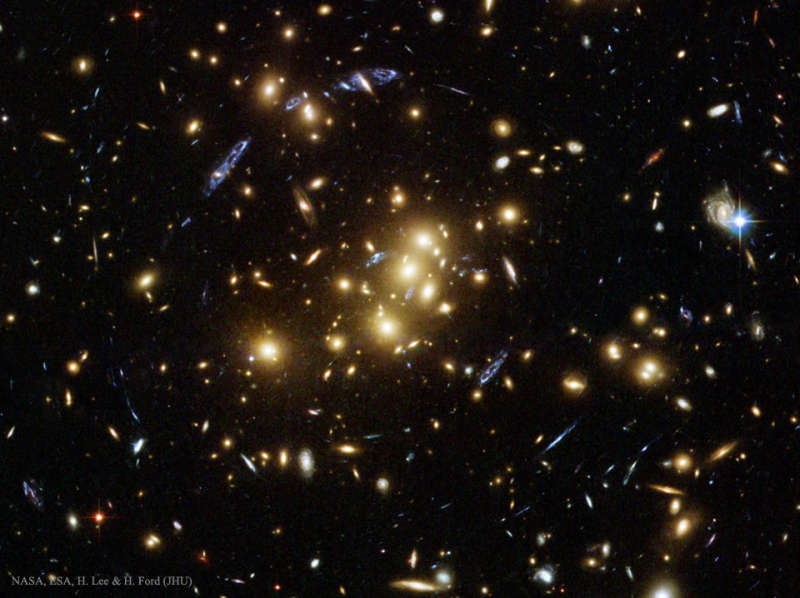Explanation: What are those strange blue objects? Many of the brightest blue images are of a single, unusual, beaded, blue, ring-like galaxy which just happens to line-up behind a giant cluster of galaxies. Cluster galaxies here typically appear yellow and -- together with the cluster's dark matter -- act as a gravitational lens. A gravitational lens can create several images of background galaxies, analogous to the many points of light one would see while looking through a wine glass at a distant street light. The distinctive shape of this background galaxy -- which is probably just forming -- has allowed astronomers to deduce that it has separate images at 4, 10, 11, and 12 o'clock, from the center of the cluster. A blue smudge near the cluster center is likely another image of the same background galaxy. In all, a recent analysis postulated that at least 33 images of 11 separate background galaxies are discernable. This spectacular photo of galaxy cluster CL0024+1654 from the Hubble Space Telescope was taken in November 2004.
1999 2000 2001 2002 2003 2004 2005 2006 2007 2008 2009 2010 2011 2012 2013 2014 2015 2016 |
Январь Февраль Март Апрель Май Июнь Июль Август Сентябрь Октябрь Ноябрь Декабрь |
NASA Web Site Statements, Warnings, and Disclaimers
NASA Official: Jay Norris. Specific rights apply.
A service of: LHEA at NASA / GSFC
& Michigan Tech. U.
|
Публикации с ключевыми словами:
galaxy cluster - gravitational lens - Скопление галактик - гравитационная линза
Публикации со словами: galaxy cluster - gravitational lens - Скопление галактик - гравитационная линза | |
См. также:
Все публикации на ту же тему >> | |
